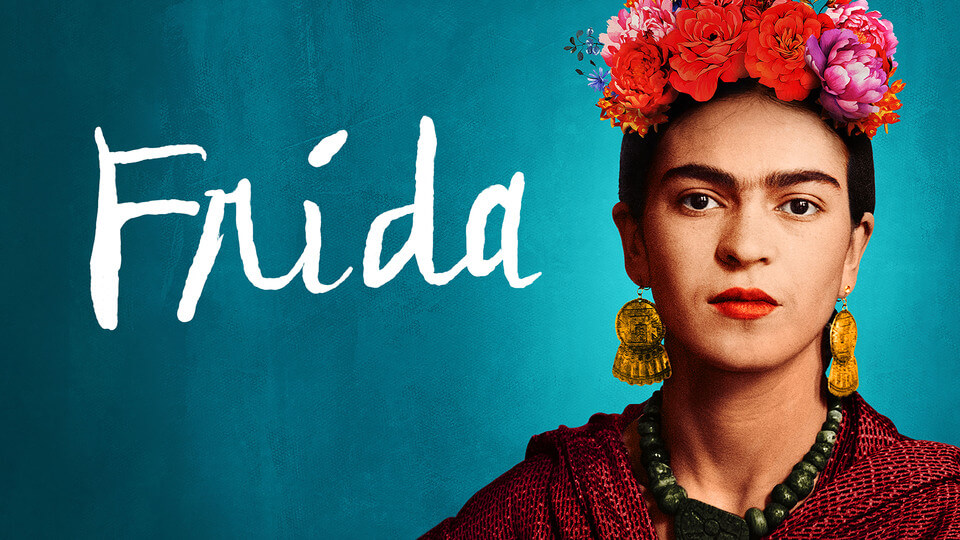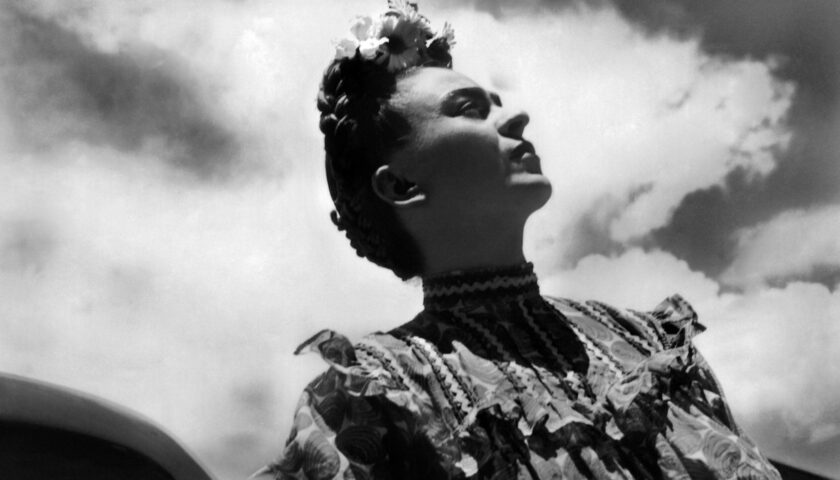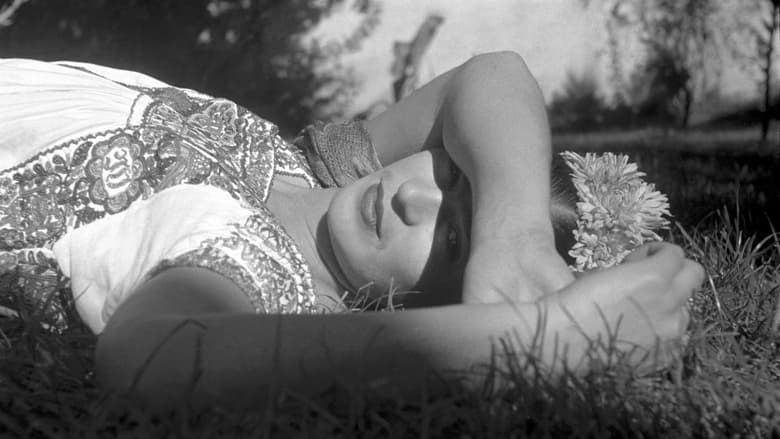“Frida” (2024) – Director Carla Gutierrez’s documentary about one of the most memorable 20th-century artists – Magdalena Carmen Frida Kahlo y Calderon (a.k.a. Frida Kahlo), universally known for her self-portraits – should enlighten broad audiences, those who deeply know her work and Frida novices who may have seen “Self-Portrait with Monkey” once on a 2” by 2” magnet at a flea market.
The film chronologically markets Ms. Kahlo’s life (1907 – 1954) from her days as a toddler in 1910 to her passing in 1954. Gutierrez and her team’s conventional use of a (mostly) straightforward timeline offers a sturdy foundation to help support two imaginative facets – the narration and animation style – of this 84-minute presentation.
Rather than include a slew of current historians who express Frida’s impact on her home country (Mexico) and the worldwide art-world community, Fernanda Echevarria narrates from Ms. Kahlo’s own words – from past writings and interviews – as an effective storytelling device to convey personal confessionals.
Gutierrez and Echevarria intimately reveal the artist’s thoughts about her marriage, mental and physical struggles with near-crippling ailments (from a catastrophic accident), reasoning for painting portraits, underlying emotions about wealthy art clients, admiration for her father, and feelings over past lovers.
“The handrail went through me like a sword through a bull.”
“I now inhabit a world of pain.”
“I paint because I need to.”
“Make love, take a bath, and make love again.”
Words from beyond the grave lead the movie. Visually, Gutierrez finds and presents an incalculable number of photographs and videos, including clips from the 1920s, to support the distinctive, individual words uttered. Some of the black-and-white still and moving photos –sometimes splashed with bits of color – are of Frida and her family, but there are heaps of records from her time with Diego. We witness their everyday existence and travels to the United States and France, providing context for her personal and professional “faces.”
Diego was a vast influence on Frida’s art, and at times, the movie could almost be called “Frida and Diego”, because he’s featured so prominently. The film provides several examples of Mr. Rivera’s artwork, including massive murals, ones sought by the industry’s admirers and Corporate America, like the Ford family. Diego was a heavy man at 6’ 1”, and Frida was thin with a height of 5’ 3”, so they were referred to as an “elephant and a dove,” but rather than belabor their physical differences, the doc dives into his grand successes (that sparked their travel) and his divisive infidelities which harmed their relationship.
In addition to the emotional harm, the movie dedicates difficult but necessary screentime to the aforementioned accident, as the emotional and physical trauma had enormous impacts on Frida’s headspace and paintings, and Gutierrez and Echevarria undoubtedly illuminate the dark connections. In addition to the verbal reflections and historical images, the film’s animation team splashes dozens of wonderous eccentric delights with stop-motion animation – like a less exaggerated “Monty Python’s Flying Circus” style – that showcases the woman’s most famous and lesser-known works.
Glorious, moving examples of “The Two Fridas”, “Diego and I”, “The Wounded Deer”, “Henry Ford Hospital”, and many others thoughtfully parade on-screen, reflecting Frida’s marriage and the ongoing physical pain that plagued her for decades.
The movie features a telling quote from our heroine: “In my life, I’ve only painted the honest expression of myself to say what I couldn’t in any other way.” However, in less than 90 minutes, Gutierrez remarkably paints Frida’s emotional expressions in multiple thoughtful ways.
![]()
![]()
![]() 1/2 out of
1/2 out of ![]()
![]()
![]()
![]()
Directed by: Carla Gutierrez
Runtime: 84 minutes
Image credits: Amazon MGM Studios






